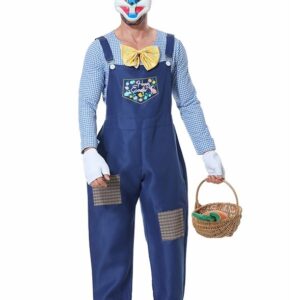As the time progressed, tools and techniques became a little complicated yet the idea behind Indian art remained the same. Most of the Indian art was influenced by the socio-economic and cultural factors that were prevailing back in the days. Artists who had nothing but talent to showcase their skills, depended on very limited resources. But they knew how to utilise the minimum resources to their best. Following are the details of certain Indian art forms that are unique in terms of the materials involved to make them:
- Phad paintings: Phad paintings are the famous scroll paintings of Rajasthan. Phad paintings have religious and spiritual themes and they are used as mobile temples by Bhopas, the local priests of Rajasthan. Instead of statutes, Phad paintings depicting figures of Hindu gods and goddesses are worshipped by some tribes in Rajasthan. The size of such scroll paintings vary from a couple of feet to as large as 20 feet. Another interesting thing about Phad paintings is that they are painted using vegetable paints, making them the most organic paintings. Phad paintings are very popular in most parts of Rajasthan till date and government has been doing a lot to conserve this simple yet beautiful art form.
- Patachitra: Patchitra is the art that emerged out from the villages of Odisha. Patchitra artists, despite of the availability of limited resources, are known to make very beautiful and lively paintings. Patachitra literally translates to “painting done on leaves”. Palm leaves are the most commonly used for this purpose. This art form mostly depicts stories of Hindu deities. Palm leaves are left to become hard before painting on them. Once the desired hardness of leaves has been achieved, leaves are sewn together to form a single surface, something like a huge page or canvas. Then images are painted on it using natural colours. The Patachitra paintings have very beautiful textures and colours used are a mixture of bright and shades.
- Kalamkari: Kalamkari is the kind of Indian art that involves use of pen and ink. Kalamari itself translates to “pen art”. It is done on fabric or paper of really good quality. From ink to the painting surface, everything is organic and totally natural. It is a little inspired from Persian block art and modern day version of Kalamkari art is used for textile printing. It is a well-known fact that natural dyes are used in Kalamkari and it involves seventeen painstaking steps. Certain Kalamkari paintings sell for thousands of dollars in the international market.
- Gond art: Gond art is practiced by Gondi tribe of Madhya Pradesh. Unlike other art forms it is done one ceilings, wall and roofs. More than anything else, they are made for decorative purposes. Gond artists use natural colours obtained from charcoal, coloured soil, plant sap, leaves, and cow dung. Since insides of houses are painted with Gond art, it is imperative that good quality of paints are used.
People can always buy Indian art from government approved and run crafts store. Indian ministry of culture and craft have been doing a lot to uplift and better the conditions of artists that produce beautiful paintings, yet live a miserable life. To make such artworks available to the masses, government has promoted the trading of art, both online and offline. This means that you can buy Indian art from onsite art galleries as well as from online art galleries. Recent times have seen an increase in the number of online galleries from where people can buy Indian Art. Online art galleries have changed the way trading of art is being done. They have helped the seasoned as well as upcoming artists alike and made spotting of talent easy. Such innovative mediums have successfully revived some of the less known and dying art forms. Together with government approved welfare schemes, artisans living the shadows can surely enjoy the fame and recognition they deserve.


